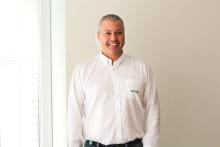
At the opening ceremony, the CEO of Grenergy highlighted the new plant as "one more example of the company's unequivocal commitment to Chile."
Grenergy inaugurated the "Gran Teno" photovoltaic plant in the Maule region (Chile), in an occasion attended by the Chilean president, Gabriel Boric, and the CEO of the renewables group, David Ruiz de Andrés. With 241 megawatts (MW) of power, this is Grenergy's largest plant of its kind.
During the event, Ruiz de Andrés highlighted that this milestone "is another example of the company's unequivocal commitment to Chile." "We have already invested more than US$700 million in the country, and US$1.4 billion more will be added for the development of 'Oasis de Atacama'," he said.
For his part, Boric valued when the permanent dialogue with the authorities to resolve doubts or difficulties in project. This way, they "come out faster and not slower."
"In this case, this plant was built in about 10 months, while the investment decision was made during one of the most difficult years for our country, in 2019. I want to thank Grenergy and the vision of its CEO, David Ruiz, who in the most difficult times, instead of stopping and freezing, decided to bet on Chile, and that bet is going to give him results," he said.
The newly inaugurated plant will provide 'green' electricity to more than 136,000 homes, which will receive green energy which, in turn, will reduce the emission of more than 147,000 tons of CO2 per year, the company reported.
PROGRESS IN ITS "MEGAPROJECT" OASIS OF ATACAMA
"Gran Teno" will join the more than 80 plants that Grenergy already operates in Chile. Meanwhile, the "Oasis de Atacama" project, the largest renewable project in Latin America, will require the bulk of investments in 2024 and 2025.
"Oasis de Atacama" will have a capacity of 4.1 gigawatt hours (GWh) and about 1 GW of solar energy. It is divided into five phases. Currently under construction, the Quillagua connection (phase 1) is scheduled to be completed by the end of this year, while the next three phases will take place in 2025.
Once in operation, more than 145,000 homes will receive clean energy from the facility, which will also prevent the emission of nearly 147,000 tons of CO2 into the atmosphere.










